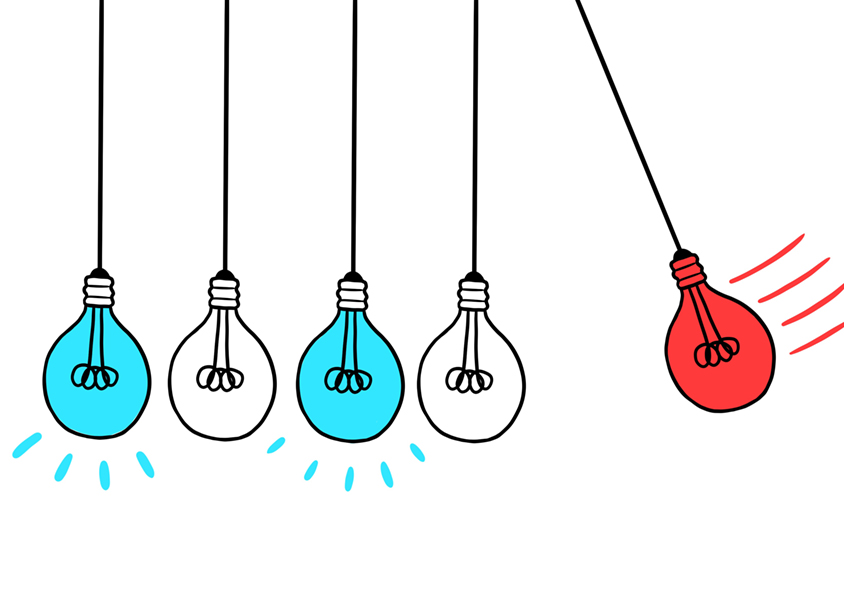Two weeks ago, Spectrum covered the International Society for Autism Research conference, which was held virtually for obvious reasons. There was a solid showing of null results in the meeting’s mammoth abstract book — 874 pages — and I hope some of them make their way to peer review, publication and eventually this newsletter.
In the meantime, here is a fresh crop of published findings that have come up null or replicated earlier ones. Thanks to everyone who wrote in with feedback on the newsletter’s first issue. As always, you can send your thoughts, ideas, interesting studies and cat photos to [email protected].
Pain relief:
In October, a group of California researchers noted an apparent increase in the likelihood that a child will have autism if her mother had an epidural during labor. The study drew widespread criticism and concern — particularly because it did not consider confounding factors. In response, a new study has done just that, adjusting for a host of potential skews, including a woman’s socioeconomic status, conditions such as anxiety or high blood pressure before or during pregnancy, and a child’s gestational age at birth. Among 123,175 children born in Canada from 2005 to 2016, no association existed between a woman’s use of an epidural and her child’s chances of being autistic, the investigators found. They call for researchers to examine how these two studies may have affected clinicians’ and mothers’ perceptions of epidurals.
The findings were published in JAMA Pediatrics in April.
Psychiatric overlap:
Another recent study bears the distinction of having both a null result and a replication. Autistic people are more likely than non-autistic people to have psychiatric conditions such as depression, according to previous research, and so are their parents, even if they are not autistic themselves. The new work confirms this association among 1,367 children with autism, 1,750 children with a developmental delay and 1,671 controls in the United States. The researchers also examined the use of selective serotonin reuptake inhibitors (SSRIs), commonly used to treat depression, in pregnant women and found no association with the chances of autism in their children.
The work appeared in Biological Psychiatry in April.
Polyglot perks:
Because many autistic children have language difficulties, some clinicians recommend that families speak only one language with them. But research increasingly shows that multilingualism is not harmful to children with autism and may even be helpful, as studies suggest it is for non-autistic children. More confirmation comes from a study of 120 autistic preschoolers receiving therapy in English in Australia, half of whom live in homes where at least one additional language is spoken. During an initial evaluation, children whose families spoke only English at home had slightly higher language and social skills. After a year, however, the children’s skills had improved equally well, suggesting that families who want to speak multiple languages can do so “without fear of a detrimental effect on social communication outcomes,” the researchers wrote.
The work was published in the Journal of Autism and Developmental Disorders in March.
Testing toddlers:
The Autism Diagnostic Observation Schedule (ADOS) is considered a ‘gold standard’ for evaluating autism, but the version designed for use in toddlers has not been widely validated, and researchers have been unsure what cutoff score to use for an autism diagnosis. A 2009 study in 182 toddlers used an algorithm to identify the most appropriate cutoff; a new replication of that work in 412 toddlers settled on the same exact score.
The findings appeared in Autism Research in March.
Et al.:
- Children diagnosed with autism before age 12 are just as likely as their non-autistic peers to finish ninth grade, according to a study of nearly 9,000 children in Denmark, though they are less likely to complete additional schooling or be employed by age 25.
- A review of more than 20 papers from the Early Markers for Autism study turned up some null results: There was no association between autism and levels of vitamin D, mercury or brain-derived neurotrophic factor (BDNF) in pregnant people and their newborns.
- Changes in sensory sensitivities may disrupt sleep in autistic preschoolers, according to a new study that builds on similar findings.
- Mutations in the SIN3B gene cause a condition whose features include autism, intellectual disability and developmental delay; the gene is in the same family as the autism-linked gene SIN3A.
- An analysis of 23 studies on the recognition of emotions based on prosody — the rhythms and intonations of a person’s speech — found differences between autistic and non-autistic people but stressed that the result may reflect publication biases: “It tends to be harder for non-significant results to be published than significant results,” the researchers wrote, “so it is possible that studies with non-significant findings (or even better performance in participants with [autism]) have been denied an opportunity of public viewing.”
- And finally, in an interview that broke my brain, Retraction Watch talked to an applied behavior analysis expert who, in an effort to address the ‘replication crisis’ in psychology, replicated a famous 1974 paper documenting an unsuccessful attempt to overcome writer’s block — aka, a blank page. (Disclosure: Retraction Watch was co-founded by Spectrum’s editor-in-chief, Ivan Oransky.)





